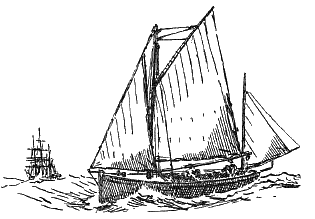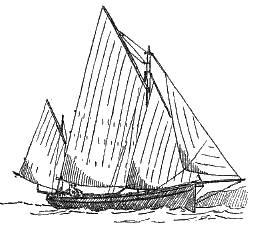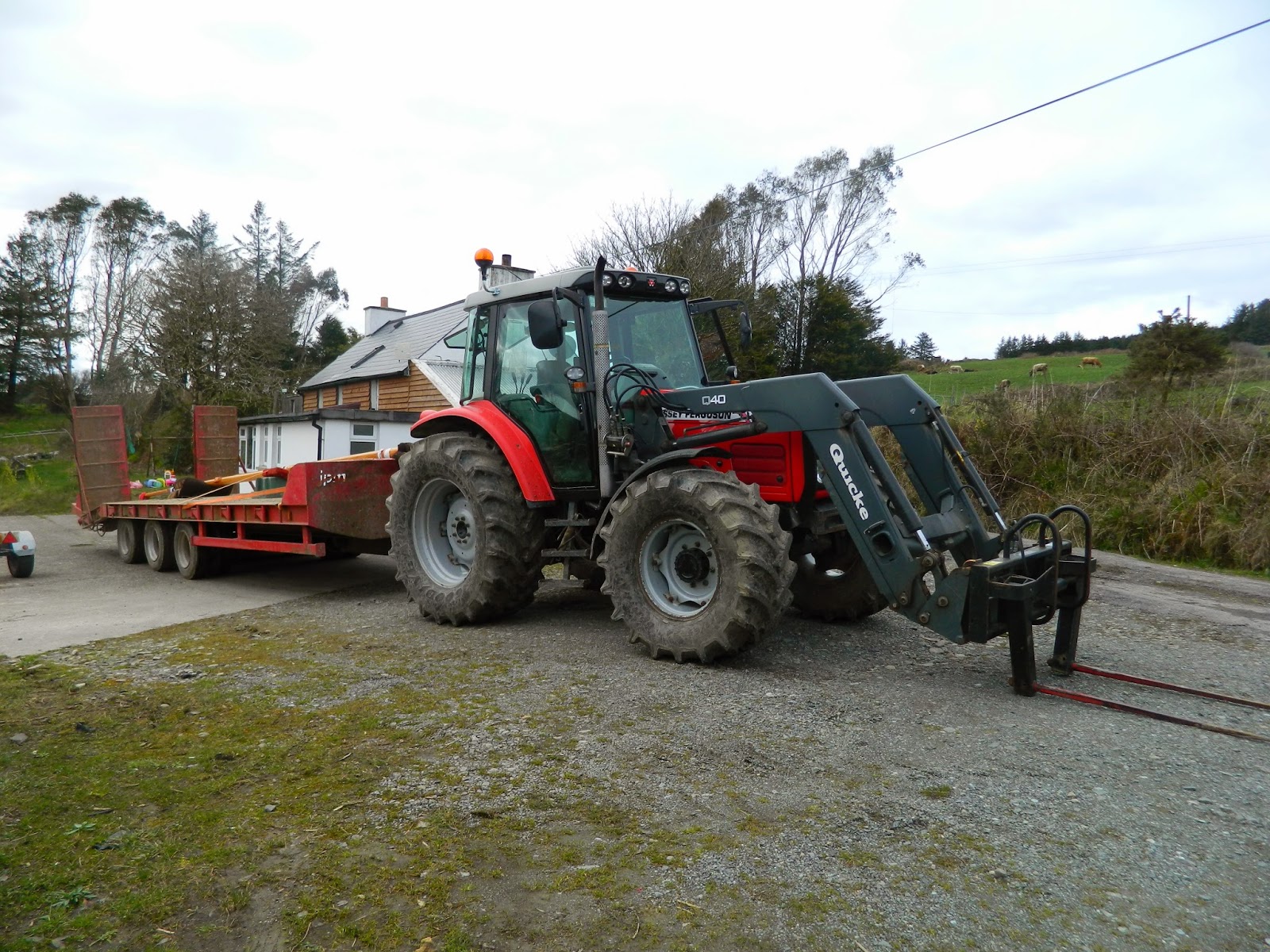The following is an extract from "Sailing, Seamanship and Yacht Construction" by Uffa Fox:
Teals Life in Ireland
Random Pictures, Videos and thoughts of a Nautical Nature
Thursday 19 June 2014
Friday 6 June 2014
Falmouth Quay Punts
Falmouth Estuary
Just as the Solent with its strong tides and narrow channels has become the home of a fore-and-aft class of boat, so similar conditions in the beautiful estuary of the Fal, with its many creeks and winding wooded reaches, although set in the midst of a lugsail coast, have made it the home of a distinct class of deep, well-ballasted boat, carrying the gaff and boom mainsail, stay foresail, and jib.The quiet old-world villages at the head of the many coves which lie along the indented coastline about the Fal estuary own a number of these boats varying in size and finish. Nearly all have great depth for their length, straight stem, transom-stern, waterways along the sides, and a fore-deck extending to the mast, and very high freeboard.
THE FAL ESTUARY
Flushing, Pill Creek, Restronguet, St.
Just in Roseland, and half a dozen other snug,
wood-fringed anchorages have their little fleet, lying
with bow-ropes among the primroses, and ready for use in
the hundred and one ways which a waterside population
with the sea instinct know. Oyster-dredging,
mackerel-whiffing, long-lining, or crabbing, as the
season suits, or even a cargo of wood or a
pleasure-party-all have their turn. And better cut,
flatter setting mainsails not even the Solent can
show.The Falmouth quay punt is the well-known class of Fal estuary fore-and-aft rigged boat, and is used for taking off stores to ships lying in the roads of that splendid harbour, and for long-lining, crabbing, drift-fishing, or pleasuring as the case may be.
There is nearly always a large fleet of deep-water sailing ships lying at anchor in the capacious anchorage of the harbour, waiting for orders, and bound to and from such distant ports as Calcutta, Rio, or Sydney.
 FALMOUTH QUAY PUNT--WINTER RIG
FALMOUTH QUAY PUNT--WINTER RIG QUAY
PUNT--SUMMER RIG
QUAY
PUNT--SUMMER RIGAbout forty of these boats are owned in and about the town of Falmouth alone. Formerly they seldom exceeded 22 feet in length, but the need for speed developed in racing off to ships has produced a bigger type of boat, and they now run to 24, 28, or even 82 feet lode-water length. The draught of a 24-foot boat would be nearly 6 feet, beam 7 feet, and ballast about 8 tons, there being generally in the newer boats a considerable iron keel. The large cockpit is used for placing stores in, and about two tons can he carried at a time in the worst weather, while in the summertime it affords plenty of accommodation for a pleasure party. The usual cost is from £80 to £100.
Like other Cornish ports such as St. Ives, Penzance, etc., Falmouth had a fine class of six-oared gigs for pilot and other duties. These boats are getting rare now, but may still occasionally be seen moving very fast with their low, long-yarded, lateen-like lugsail set in a short forward raking-mast.
*1* Just as in the Baltic the North-Wester is reckoned the most violent gale, and in one's own experience more accidents happen with the wind in this quarter than even with the the south-west and south-east gales, which often drive in an actually heavier sea, but which have less sheer ferocity and hitting power.
From the cheap pages
Monday 24 March 2014
Monday 17 March 2014
Friday 7 March 2014
Tuesday 25 February 2014
Thursday 20 February 2014
Subscribe to:
Posts (Atom)




































